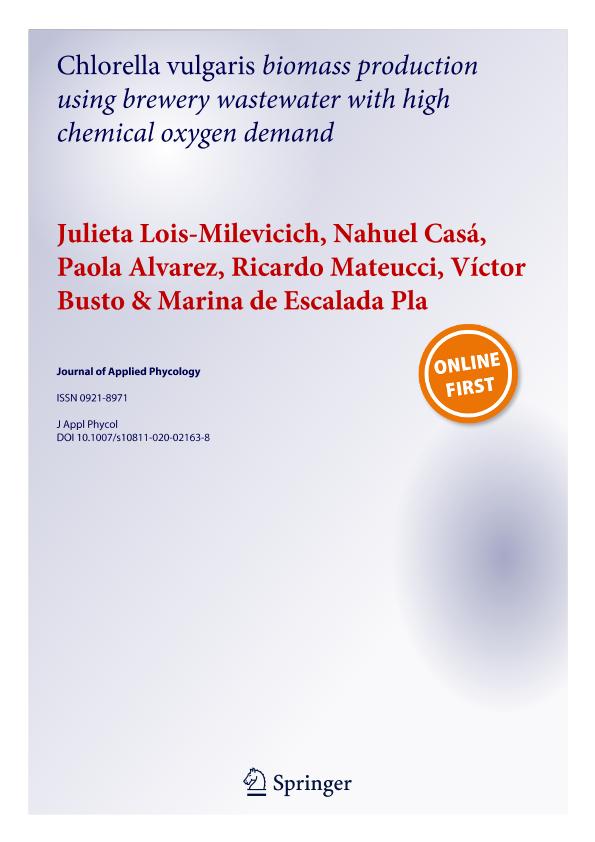Artículo
Chlorella vulgaris biomass production using brewery wastewater with high chemical oxygen demand
Lois Milevicich, Julieta; Casá, Nahuel Esteban; Alvarez, Paola; Mateucci, Ricardo Rafael; Busto, Víctor Daniel ; de Escalada Pla, Marina Francisca
; de Escalada Pla, Marina Francisca
 ; de Escalada Pla, Marina Francisca
; de Escalada Pla, Marina Francisca
Fecha de publicación:
10/2020
Editorial:
Springer
Revista:
Journal of Applied Phycology
ISSN:
0921-8971
Idioma:
Inglés
Tipo de recurso:
Artículo publicado
Clasificación temática:
Resumen
The aim of the work was to use an effluent with high chemical oxygen demand (COD) from small brewery as substrate for the production of Chlorella vulgaris biomass. A non-axenic strain from a Patagonian river was employed, and the effects of COD and pH value on the microalga growth were studied through a central composite design. A medium with COD 18300 mg O2 mL−1 and initial pH: 6.5 optimized microalga growth. With the optimal condition, C. vulgaris adapted rapidly to medium and stationary phase was attained at 75 h. Moreover, lack of illumination did not affect μmax, neither final biomass concentration, while supplementation with BG11 enhanced the biomass productivity at 0.47 ± 0.07 g L−1 h−1, and pigment contents at least four times respect to the heterotrophic mode. For the first time, a brewery wastewater with high COD could be successfully used as substrate for C. vulgaris production, without presenting inhibitions, which represents a significant advance contributing toward more sustainable promising perspectives.
Archivos asociados
Licencia
Identificadores
Colecciones
Articulos(ITAPROQ)
Articulos de INSTITUTO DE TECNOLOGIA DE ALIMENTOS Y PROCESOS QUIMICOS
Articulos de INSTITUTO DE TECNOLOGIA DE ALIMENTOS Y PROCESOS QUIMICOS
Articulos(NANOBIOTEC)
Articulos de INSTITUTO DE NANOBIOTECNOLOGIA
Articulos de INSTITUTO DE NANOBIOTECNOLOGIA
Citación
Lois Milevicich, Julieta; Casá, Nahuel Esteban; Alvarez, Paola; Mateucci, Ricardo Rafael; Busto, Víctor Daniel; et al.; Chlorella vulgaris biomass production using brewery wastewater with high chemical oxygen demand; Springer; Journal of Applied Phycology; 32; 5; 10-2020; 2773-2783
Compartir
Altmétricas



